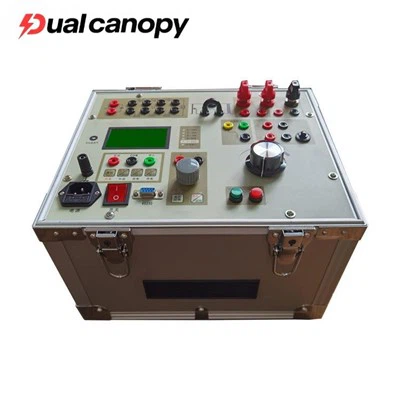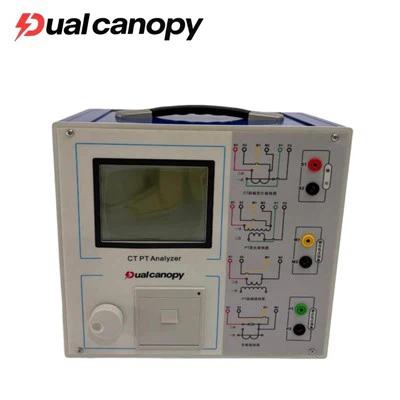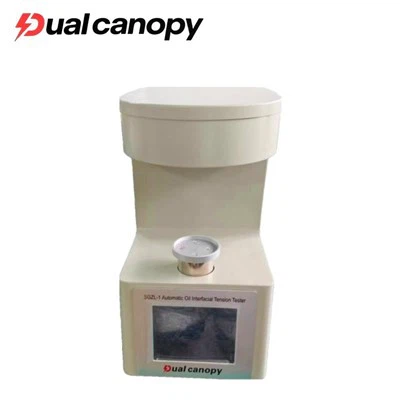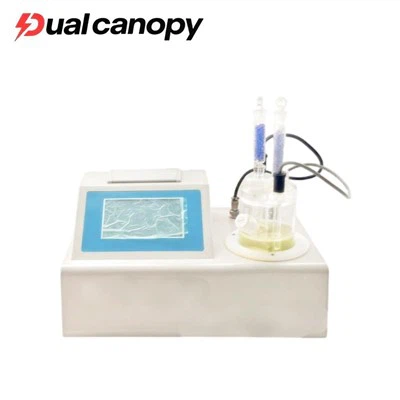When conducting dielectric loss tests on insulating oil, it is necessary to follow relevant national or international standards to ensure the accuracy and comparability of the test results.
When conducting dielectric loss tests on insulating oil, it is necessary to follow relevant national or international standards to ensure the accuracy and comparability of the test results.
Main criteria
Main criteria
National Standard:
National Standard:
GB/T 5654-2007 "Measurement of Relative Permittivity, Dielectric Loss Factor and DC Resistivity of Liquid Insulating Materials"
GB/T 5654-2007 "Measurement of Relative Permittivity, Dielectric Loss Factor and DC Resistivity of Liquid Insulating Materials"
This is the core and direct standard within the country, and it is equivalent to adopting IEC 60247:2004.
Core provisions:
This is the core and direct standard within the country, and it is equivalent to adopting IEC 60247:2004.
Test temperature: 90°C ± 0.Core provisions:
Test temperature: 90°C ± 0.5°C (for mineral insulating oils that have not been used, such as transformer oil) or 100°C (for cable oil, etc.).
5°C (for mineral insulating oils that have not been used, such as transformer oil) or 100°C (for cable oil, etc.).
Test voltage: When the frequency is 50Hz, the electric field strength is 0.Test voltage: When the frequency is 50Hz, the electric field strength is 0.5 to 1 kV/mm (for the three-electrode oil cup, a test voltage of 2kV is usually applied).
Test frequency: 50 Hz (power frequency).
5 to 1 kV/mm (for the three-electrode oil cup, a test voltage of 2kV is usually applied).
Test frequency: 50 Hz (power frequency).
It provides detailed instructions on the steps of cleaning the electrode cup, drying it, sampling the oil, and preparing it.
Electricity industry standards:
It provides detailed instructions on the steps of cleaning the electrode cup, drying it, sampling the oil, and preparing it.
In the relevant guidelines such as DL/T 474.Electricity industry standards:
In the relevant guidelines such as DL/T 474.4-2018 "Field Insulation Test Implementation Guidelines - Part 4: AC Withstand Voltage Test", the methods and requirements for dielectric loss testing will also be referred to.
DL/T 596-2021 "Power Equipment Preventive Testing Procedures"
4-2018 "Field Insulation Test Implementation Guidelines - Part 4: AC Withstand Voltage Test", the methods and requirements for dielectric loss testing will also be referred to.
Insulating oil dielectric loss tester
DL/T 596-2021 "Power Equipment Preventive Testing Procedures"
This standard specifies when testing is required and how the results should be judged.
Insulating oil dielectric loss tester
The requirements for dielectric loss of transformer oil (at 90°C):
This standard specifies when testing is required and how the results should be judged.
New oil before startup: ≤ 0.005
The requirements for dielectric loss of transformer oil (at 90°C):
Running oil: ≤ 0.New oil before startup: ≤ 0.005
02 (for transformers of 330kV and above)
Running oil: ≤ 0.Running oil: ≤ 0.02 (for transformers of 330kV and above)
04 (for transformers of 220kV and below)
Running oil: ≤ 0.Note: The specific limits should be referred to the latest version of the regulations.04 (for transformers up to 220 kV)
Overview of the standard testing process
Note: The specific limits should be referred to the latest version of the regulations.
Adhering to standard procedures is crucial for ensuring the accuracy of data.Overview of the standard testing process
The process is as follows:
Adhering to standard procedures is crucial for ensuring the accuracy of data. The process is as follows:
Sampling: Follow the provisions of GB/T 7597-2007 "Sampling Methods for Power Oil (Transformer Oil, Turbine Oil)" to conduct the sampling. Use clean and dry dedicated sampling bottles to prevent contamination and moisture absorption.
Sampling: Follow the provisions of GB/T 7597-2007 "Sampling Methods for Power Oil (Transformer Oil, Turbine Oil)" to conduct the sampling.Preparation:
Use clean and dry dedicated sampling bottles to avoid contamination and moisture absorption.
Electrode cup cleaning: This is the most crucial step.Preparation:
Electrode cup cleaning: This is the most crucial step. All components of the electrode cup must be thoroughly cleaned using appropriate solvents (such as petroleum ether, n-heptane), then rinsed with absolute ethanol, and finally dried thoroughly in an oven.
Oil sample preparation: Place the oil sample in a laboratory environment and let it stand for a period of time to ensure its temperature approaches the ambient temperature.
All components of the electrode cup must be thoroughly cleaned using appropriate solvents (such as petroleum ether, n-heptane), then rinsed with absolute ethanol, and finally dried thoroughly in an oven.Test:
Oil sample preparation: Place the oil sample in a laboratory environment and let it stand for a period of time to ensure its temperature approaches the ambient temperature.
Assemble the dried and cooled electrode cup (without adding oil), measure the capacitance and dielectric loss value of the empty cup, and take this value as the background value.Test:
This value should be extremely small and stable.
Slowly inject the oil sample into the electrode cup to avoid the formation of bubbles.
Assemble the dried and cooled electrode cup (without adding oil), measure the capacitance and dielectric loss value of the empty cup, and take this value as the background value. This value should be extremely small and stable.
Set the instrument parameters: temperature 90°C, voltage 2kV.
Start the test.Slowly inject the oil sample into the electrode cup to avoid the formation of bubbles.
The instrument automatically heats up, controls the temperature and begins to measure.Set the instrument parameters: temperature 90°C, voltage 2kV.
Start the test. After the temperature stabilizes at 90°C, read the stable dielectric loss value.
The instrument automatically heats up, controls the temperature and begins to measure.Calculation and Report:
The instrument will automatically display and record the dielectric loss value. Once the temperature stabilizes at 90°C, read the stable dielectric loss value.
Calculation and Report:
The report should include information such as the test temperature, voltage, oil sample name, and equipment number.
The instrument will automatically display and record the dielectric loss value. The report should include information such as the test temperature, voltage, oil sample name, and equipment number.
Cleaning: After the test is completed, immediately empty the oil sample and thoroughly clean the electrode cup according to the method in Step 2 for future use.






